”The arrival of January is unmistakably signaled by the presence of Christmas trees thrown on sidewalks, marking the end of the winter holiday season. (…)”*
A year after the exhibition “Ten of Swords”, we find ourselves symmetrically in the same reference period, at the same reset point of things, part of the same natural cycle, which continues relentlessly. The post-celebration relics of Christmas, left on the streets of the cities, are witnesses to the transition to a new year and serve as a visual reference for the themes explored in the exhibition. At the same time, they serve as a reminder of the opulence and nonsensical celebration, abandoned completely from their initial functions, configuring a common backdrop for the last months of winter. The exhibition takes us through the daily life burdened by these residues, reconfiguring them into new, meaningful contexts.
“Ten of Swords”, by artist Alexandru Mihai Budeș, showcased a selection of his recent works in a contemplative installation at Atelier 35 in Bucharest. With a background in Sculpture and Art History, the artist returns to the city where he completed his university studies for his first solo exhibition here. Having been established in Berlin for nearly ten years, Alexandru is an active artist on the Romanian art scene, a place where many of his works draw their inspiration, often stemming from his attempt to understand what lies beyond his early memories.
In “Ten of Swords”, a dialogue is created between the past and the present, between the real and the imaginary, between the concrete and the symbolic. An invitation to reflect on how our perceptions can shape our understanding of the world is subtly introduced in a context where the artist launches various possibilities for reading the exhibition, depending on the perspective from which we view the proposed images. The unseen aspect of the installation lies in how the exhibited symbols, when reversed, overturn their meanings entirely—much like the dual interpretations of tarot cards. The interpretive key to the installation lies in the double significance of the card that lends the exhibition its title, and the visual connection between the card and the ensemble of works: where, between rebirth and death, existence reiterates cyclically.
Just as the theme it investigates is anchored in modes of spontaneous exploration, the exhibition begins with an image the artist encountered during a recent journey when he noticed a fir tree decorated in the middle of summer in a village cemetery. Almost premonitory, this imprint triggered the creative process for “Ten of Swords.” Between the intuitive power of reading a landmark and its relationship to the idea of fate, lie subsequent explorations, where the symbol-image glimpsed on the move activated childhood memories and a process of investigating traditions revolving around the fir tree. In this context, the tree carries multiple meanings: from its use in funeral rituals to symbolizing life. In various forms, whether decorated, carved, configured as a toy, or a matchstick, it denotes both practical versatility and new narratives accompanying each practical aspect around which this element can transfigure.
Alexandru Mihai Budeș’s artistic practice is significantly influenced by the memories that formed his early years, and the fir tree is a landmark that appears earlier in his works. Developing a series of works started in 2020, based on the nostalgia of creating an emotional bond with this residue of the winter holidays, the artist recontextualizes the trunks of the trees into swords of various shapes and sizes, initially replicating objects used in childhood games behind the block. The first series of swords, made from trunks found on the streets, explored the childhood spirit of giving a new fate to this magical waste. Later, for the exhibition at Atelier 35, the artist creates a more complex display—developing a scenography of the silent passage of time, but also an exploration of the multiple meanings a symbol can encompass.
Reflecting on the symbolism of the fir tree, associated with rebirth, beginnings, and eternal life, Alexandru explores the contrast between this powerful symbol and the desolate reality of January, marked by urban landscapes suffocated by the remains of festive consumption. This contrast highlights the ecological impact of consumption cycles and society’s tendency to ignore major issues such as global warming, famine, epidemics, wars, and other global crises. The fir tree thus becomes a symbol of tension between the promise of regeneration and the reality of ongoing degradation.
The installation at Atelier 35 proposes a display of an arrangement of fir trees recovered from the streets of Bucharest after the winter holidays, reconfiguring a forest—in this context—devoid of life, reduced to a decoration. Above the needle-tips that are about to fall, triumphs an installation made of ceramic pieces intersected with polished fir trunks, intertwined and shaped into swords that mirror the image corresponding to the Ten of Swords in Tarot – in an almost performative arrangement. The card, read with the swords down, signifies the end of a cycle, betrayal, or profound pain; while read in reverse, it can signify healing, overcoming a difficult period, and the possibility of starting a new phase. From here, the artist develops the rest of the elements that compose the ensemble.
Completing the scenography, the parade of fir trees is accompanied by two sound materials collected by Constantin Brăiloiu in 1937, performed by Anuța Medrea—Song of the Fir Tree in the Yard, and Song of the Fir Tree at the Cemetery—both exploring the use of the fir tree in certain rituals about to be lost. In some areas of Romania, the fir tree plays an ambivalent role: a symbol of life and continuity in moments of joy, usually planted or decorated when a child is born, but also a witness to passing away—used in funeral rituals to take the role of the partner for those who have died unmarried or decorated with various symbols that ease the passage into nothingness for those who depart from us. This balance between life and death accentuates the symbolism of the fir tree and creates a bridge to the meaning of the Tarot card Ten of Swords, drawing elements from a history that is about to be lost.
Also in the sphere of recovery is the work Echoes, Spells, and Disenchantment, which adds a reflective dimension to the loss of attention and interest people show towards their own legends and history. This becomes a possible way of saving what is on the verge of being forgotten – a call to the collective responsibility of preserving and reinterpreting memory. The work, developed as a publication accompanied by a sound fragment, starts from the story of the people of Șona, a village in Brașov County, where fragments of myths, legends, and local conspiracy theories, researched during the artist’s trip, turned out to have been distorted by recent history and the influence of contemporary mass media. To clarify this vague and overlaid image, the artist turned to artificial intelligence (AI) to facilitate a collective form of memory, modeled using fragments of information and images collected from Șona. Thus, it presents a perspective between fiction and reality that transcends the known past—in a material that speaks about destiny, the passage of time, the circularity of history, and human nature; a reflection between the death of tradition, history, and the need to preserve them.
The central piece of the ensemble, Ten of Swords, is a replica of the tarot card of the same name—a ceramic work whose mounting system allows the card to be flipped in both directions, to facilitate oscillating between the two meanings of the image. A similar bicolor representation of the Tarot card is found printed in the work Safety Matches, a limited edition of 100 matchbox sets originating from the Safety Match Monopoly established by Ivar Kreuger (The Match King) on a global scale, and adopted by Germany in 1930. Through the faces of the Welthölzer and Haushaltsware boxes—the only matches distributed here at the time—fascist propaganda messages were often disseminated. The artist retrieves these boxes through Berlin’s Volksbühne theater, which already reconfigures their visual content. Through his intervention, Alexandru transforms the object once again, infusing it with a sense of regeneration—both through the act of reconverting an object with initial political connotations, which had disastrous implications for history, and by associating a new image with the received matchboxes. The 100 editions of the work were available for part of the exhibition’s audience to take home, each recipient later deciding how to interpret the Ten of Swords, whether upright or reversed. The artist places the interpretive key to the exhibition in the viewer’s hands, subtly alluding to the idea that the message conveyed by the exhibition is part of a larger picture, where everyone can contribute to change through their actions and interactions.
From trees abandoned on the streets—relics of a consumption habit—to swords, and culminating with matchsticks soaked in phosphorus and placed in veneer boxes, “Ten of Swords” explores various forms and interpretations of the fir tree. Through the materialization of wood in these diverse forms, alongside the meanings embedded in the associated works, the exhibition reflects on continuity and forms of recovery or regeneration. At the same time, it emphasizes the importance of understanding the antithesis of these stances.
*excerpt from the curatorial text of the exhibition
The “Ten of Swords”exhibition took place between February 7 and February 29, 2024, at Atelier 35 in Bucharest.
POSTED BY
Alexandra Mocan
Alexandra Mocan is a visual artist, curator, and one of the co-founders of MATCA artspace from Cluj-Napoca, initiated in 2017. She is mainly interested in maintaining a functional platform for the loc...
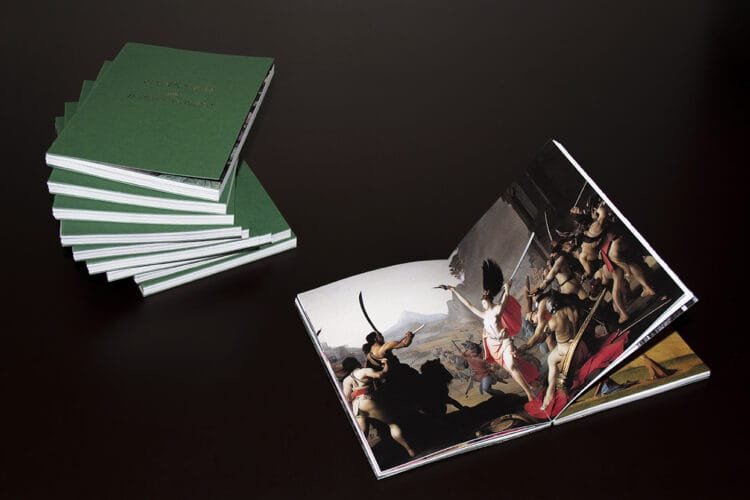
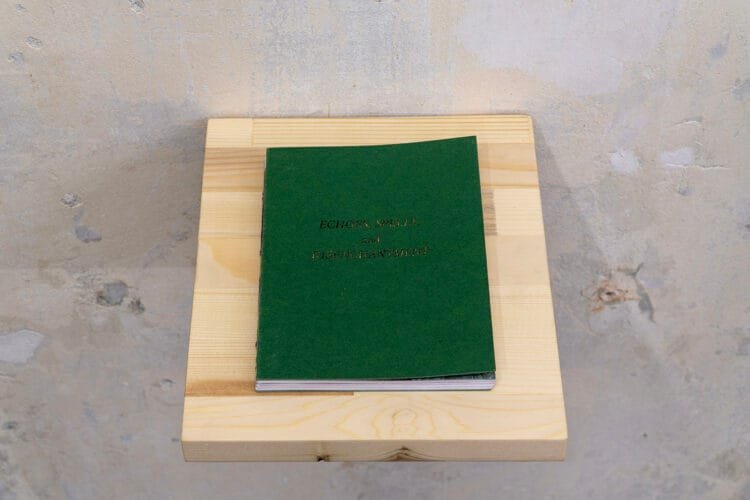
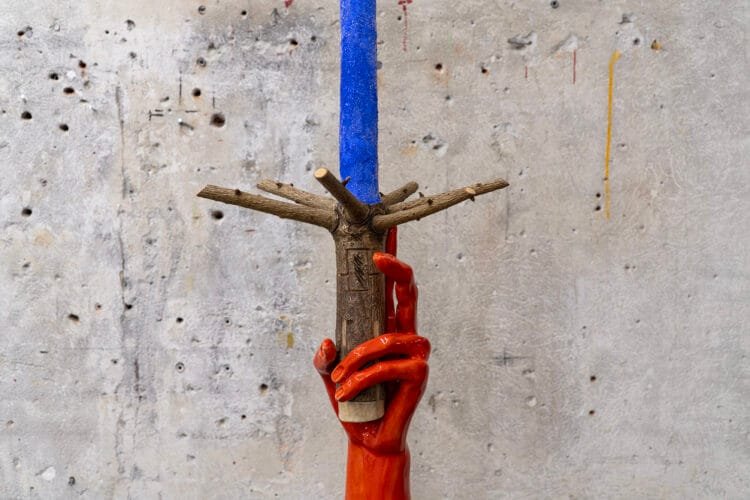
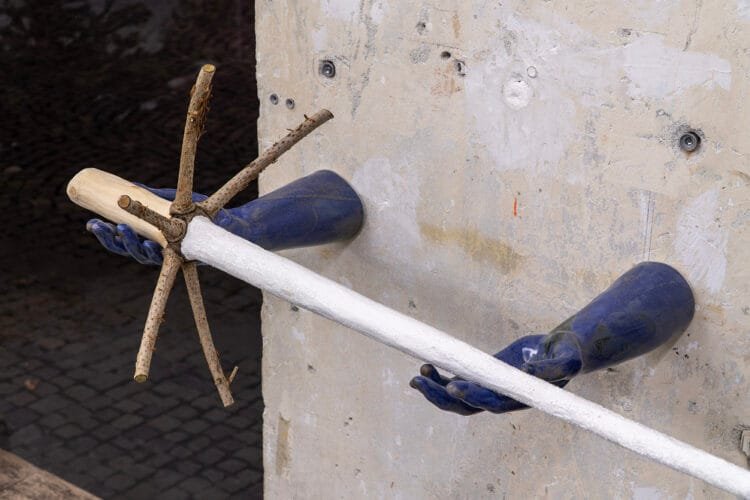
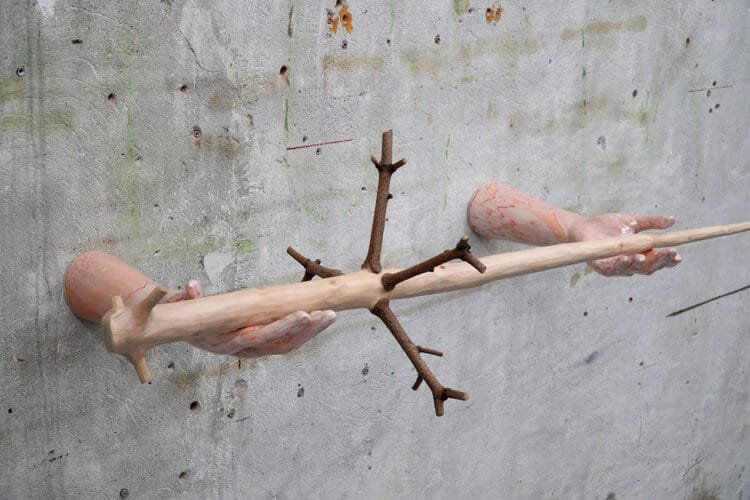
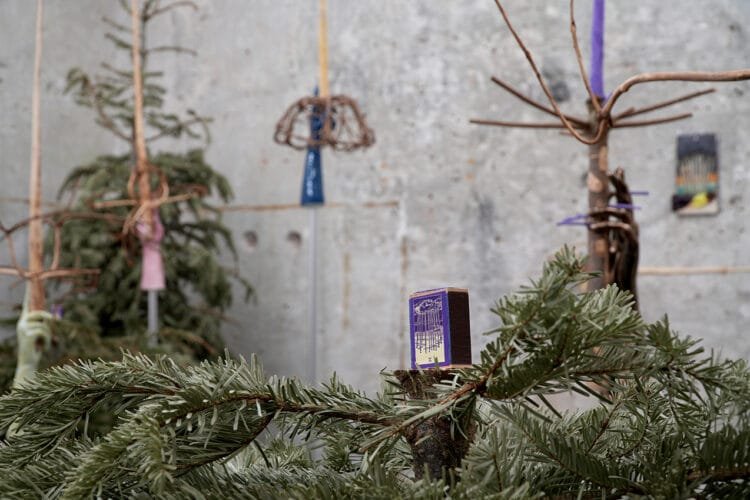
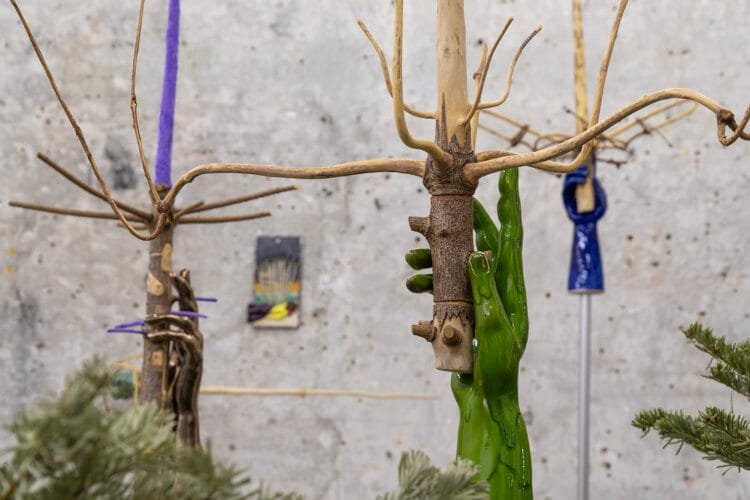
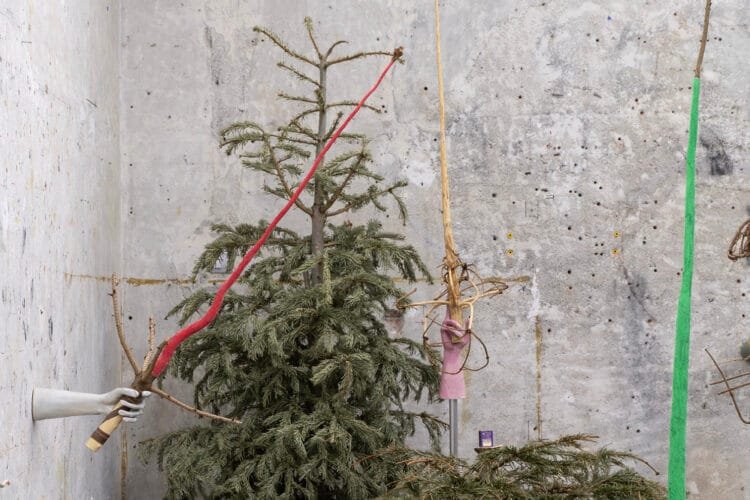
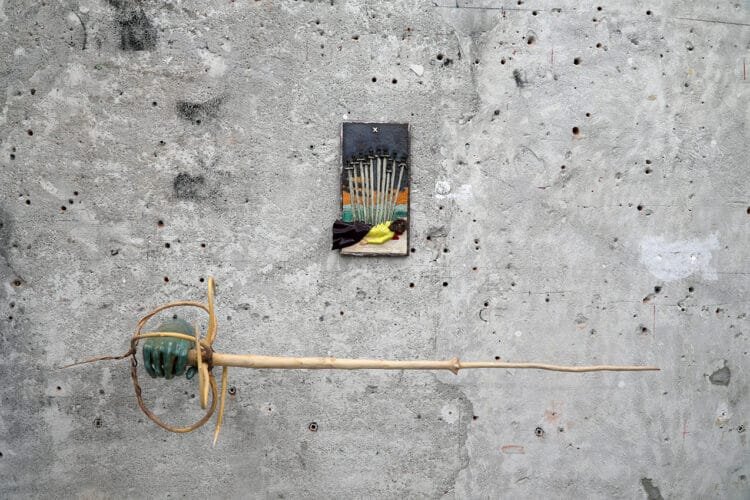
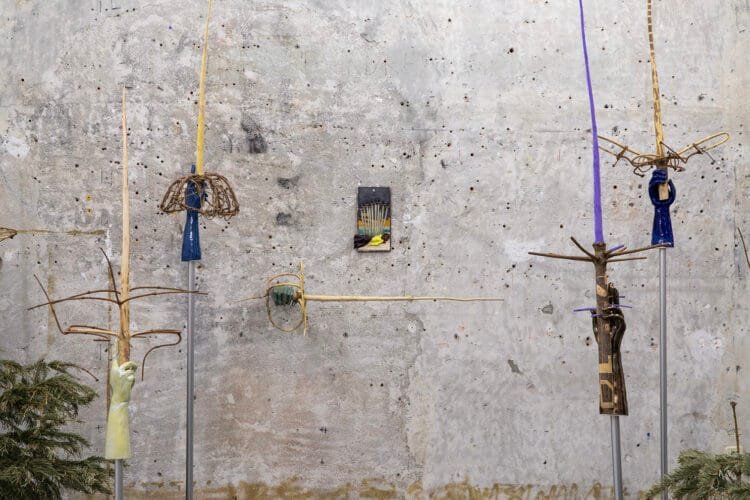
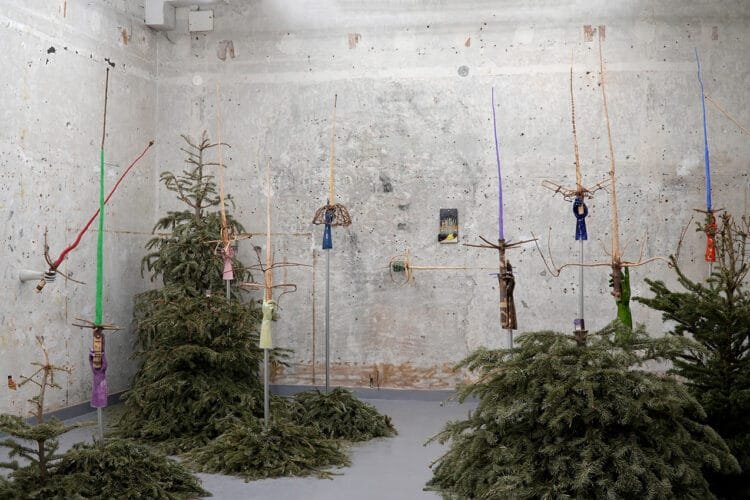

Comments are closed here.